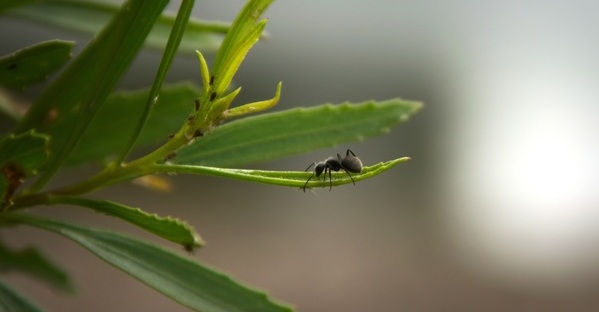The depiction of “big, black ant” practically always means carpenter ants. Carpenter ants have a meaningful purpose in the world. On the one hand, the openings carpenter ants make further along with the decomposition of dead limbs, logs, and stumps. On the other hand, carpenter ant damage is when these pests nest in mature trees with an abundant amount of rotting wood or hollow.
The nests are in wood decaying due to additional moisture coming in via an opening (holes, cracks, etc.) to the outside.
The Root of Carpenter Ant Damage
Carpenter ants take advantage of a current situation of weak softwood to set up a colony. Diseases, other pests, stress, environmental conditions, or mechanical injury are guilty of killing tree parts and branches where carpenter ants can nest. The presence of rotting wood offers these insects the chance to colonize the tree.
Carpenter ants search for opportunities to take advantage of a bad situation. The moisture, the opening to the outside, and the soft rotting wood are present. This situation is the time for carpenter ants to show up. The ants might advance the damage into sound wood, and a damaged tree might lose additional structural strength. However, ant control isn’t crucial for a tree’s health.
Carpenter ants create nests in wood by chomping sandpaper-smooth chambers and tunnels. These insects can’t eat wood, so discarded wood becomes shredded fragments of coarse sawdust emitted from the nests. The sawdust might have dead ants and dead insects that the carpenter ants have and bits of dead bugs that the carpenter ants have devoured.
Remedies for Carpenter Ant Damage
Spray or dust tree pesticides right into the nest cavity. Another suggestion is to treat the bottom of the tree and the surrounding dirt, hoping to decrease the carpenter ant population. Treatment probably won’t eternally eliminate a tree of carpenter ants. Treating the affected tree every 12 months might be necessary.
Don’t seal or corking tree cavities or treating tree cuts with dressings. These remedies aren’t necessary and won’t stop or get rid of carpenter ants or deterioration.
Chopping down a sustainable tree in the chances of evading ant issues in your residence is an excessive unrecommended response. If anybody advises getting rid of trees from your outdoor space to control ants, don’t forget that easy answers rarely solve complex issues.
Talk with a certified and experienced arborist before deciding anything permanent and extreme to your yard plants. On occasion, carpenter ants do invade a home, damaging deck boards, door sills, window frames, and other things made of wood.
Though, in practically all extreme damage instances, there is also an established and continuing moisture issue. Excessive moisture in wood precedes both carpenter ants and wood decay. It’s difficult to say which lets you down quicker. For ant control indoors, contact your local pest control professional for baits, sprays, or dust to decrease the ant population.
The first thing to do if you see ants on your tree is to schedule a tree inspection. Call Lenoir Tree Service for assistance.

Recent Comments